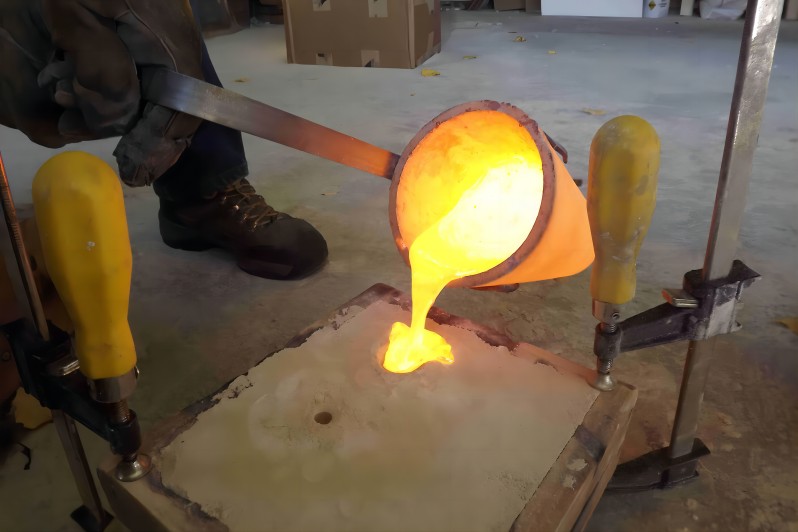Comparing Aluminum Die Casting with Permanent and Green Sand Mold Casting
When considering the casting of aluminum, three common methods are aluminum die casting, permanent mold casting, and green sand mold casting. Each method has its advantages and disadvantages, making them suitable for different applications. Below is a comparison of these casting processes:
Process: Molten aluminum is injected into a steel mold under high pressure.
Advantages:
Smooth surfaces and tight tolerances without the need for additional surface treatments.
High production rates and precision.
Disadvantages:
Higher tooling and equipment costs compared to other methods.
Limited to smaller-sized parts.
Process: Molten aluminum is gravity-poured into a reusable steel mold.
Advantages:
Produces stronger casts compared to green sand casting.
Suitable for larger parts and higher production volumes.
Disadvantages:
Initial tooling costs are higher than green sand casting.
Less precision compared to die casting.
Process: Wet sand is used to create the mold for casting.
Advantages:
Lower tooling and equipment costs compared to die casting and permanent mold casting.
Suitable for larger parts and intricate designs.
Disadvantages:
Lower dimensional accuracy and surface finish compared to die casting.
Sand molds need to be recreated for each casting, impacting production efficiency.

Comparison:
Cost:
Die Casting: Higher initial tooling costs, but lower production costs for high volumes.
Permanent Mold Casting: Moderate tooling costs, suitable for medium to high production volumes.
Green Sand Mold Casting: Lower tooling costs but may incur higher production costs for larger volumes due to the need to recreate molds.
Surface Finish and Tolerances:
Die Casting: Superior surface finish and tight tolerances without additional treatments.
Permanent Mold Casting: Good surface finish, but not as precise as die casting.
Green Sand Mold Casting: Lower surface finish and tolerances compared to die casting.
Strength:
Die Casting: Suitable for a wide range of applications with good strength characteristics.
Permanent Mold Casting: Produces stronger casts compared to green sand casting.
Green Sand Mold Casting: Lower strength compared to die casting and permanent mold casting.
Production Efficiency:
Die Casting: High production rates and efficiency.
Permanent Mold Casting: Moderate production rates suitable for medium to high volumes.
Green Sand Mold Casting: Slower production rates due to the need to recreate molds for each casting.
Conclusion:
Choose Aluminum Die Casting for superior surface finish, tight tolerances, and high production efficiency, especially for smaller-sized parts.
Opt for Permanent Mold Casting when strength is a critical factor and for medium to high production volumes.
Consider Green Sand Mold Casting for cost-effective solutions in cases where lower tolerances and surface finish are acceptable, and for larger, more intricate parts.
Dongrun Casting have 20000 square meters facility houses and 200 production & test equipment, From quotation and tooling design to casting and finished machining, we can work with you at every stage. We serves wide range of industries-from Fortune 500 corporations to small and midsize OEMs. Our products includes: Automotive&Trucking, Electric Utility & Communications, Metering System, Hydraulic Industry, Medical Devices, Lighting, Fuel and Gas Pressure, Furniture parts.
More Details : www.dongruncasting.com
